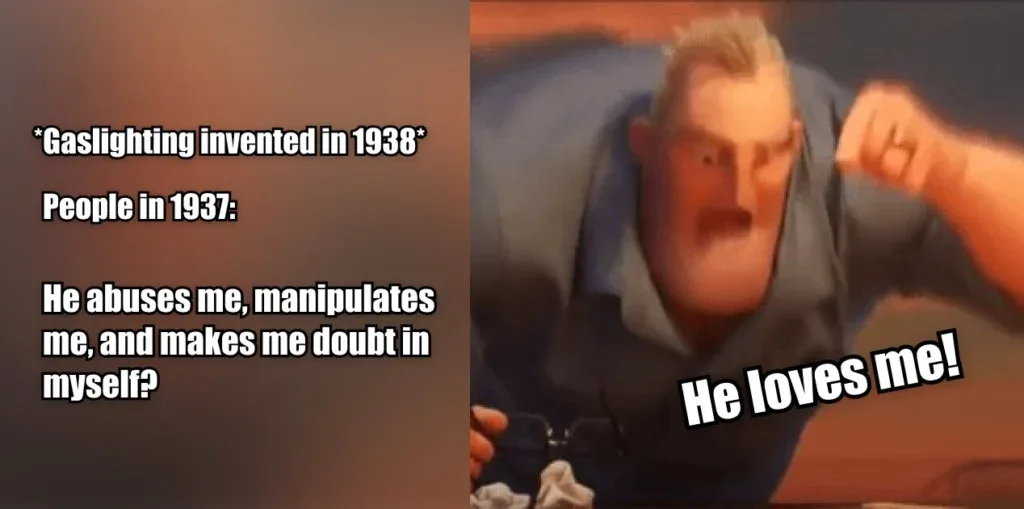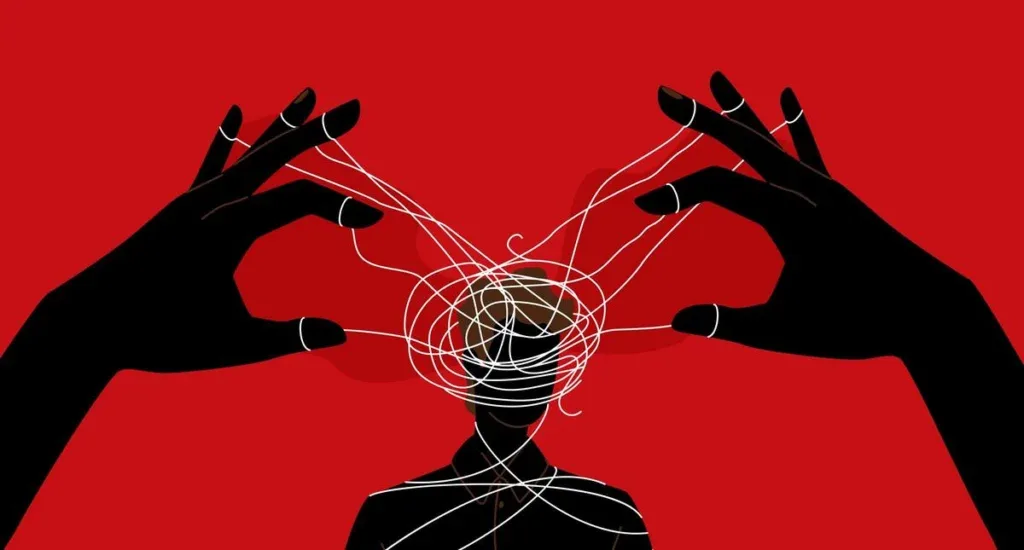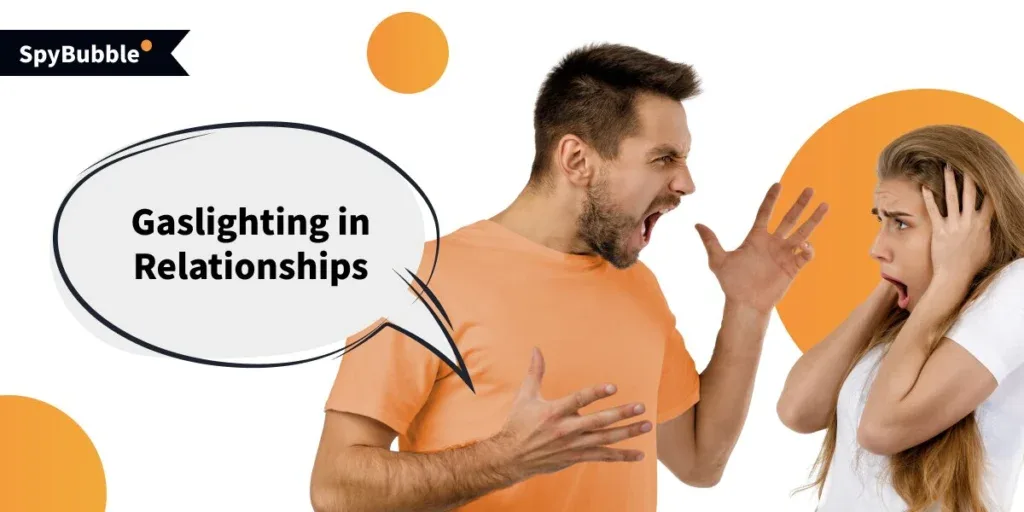Have you ever been in a situation when someone pretended they know you better than yourself: your thoughts, strengths and weaknesses, thoughts and actions? Such people try to question your sanity; they twist your mind in a way that you start doubting your own identity and individuality. Your self-esteem goes down, your mood is awful, and you do not want to do anything as you are sure you’ll fail. If yes – congratulations! You faced gaslighting!
Of course, no congratulations at all, it was a joke. There is nothing great about experiencing gaslighting, and people who have to go through it deserve all the possible compassion. Moreover, gaslighters should be stopped and “re-educated” so that they do not ever do it again. However, to understand the matter better, let’s start from the very beginning (as if there are any other places from where we can start).
Gaslighting – Origins of the Term

The term gaslighting originates from 1938. British dramatist Patric Hamilton wrote a play featuring a story as old as our world: a perfidious husband wants to get rid of his wife to own all her reaches. At those times, the electric network was not so developed, and it was normal to have gas lights at home. The husband is trying to manipulate his wife by creating a dim environment and mysterious atmosphere to convince her that her perception of reality is getting twisted and that she can hardly understand where it is a dream and where it is not.
Thus, this husband from the story became the first known gaslighter in human history. This play was later transformed into two movies – one British and one American and is widely known under the name “Gas Light”, honoring those gas lamps the husband was using.
Current Situation with Gaslighting
Nowadays, gaslighting is a well-known issue recognized by psychologists all over the world and, unfortunately, very popular. It is classified as a form of emotional abuse and is used with several goals:
- to gain control over an individual’s life;
- to humiliate an individual;
- to deprive one’s autonomy.
Scientific American claims that gaslighting behavior can make a victim much more anxious, depressed, and confused, making it much easier to manipulate them. In some extreme cases, it can even lead to PTSD and other serious psychological disorders. The main danger of gaslighting is that it corrupts common life values such as trust, respect, and love with the aim of gaining power and control over a person.
The problem has grown so much nowadays that even specific organizations that help every victim of gaslighting and emotional abuse addressing them for assistance. Professional psychologists and psychotherapists work with them to help them get rid of the consequences and avoid getting into the same situation in the future.
One such organization is called “Love and Respect”. It is created specifically for young people who may not be experienced in relationships and may become a gaslighting victim more often. If you feel you are being gaslit or it is hard for you to build healthy relationships – contact them without hesitation and get help from mental health professionals. It is better to do it sooner than later!
Gaslighting in Relationships
We have already touched on relationships, but we haven’t said directly that gaslighting in relationships is one of the most popular types of abuse. Unfortunately, it often happens that people cannot balance their personalities in their couple, and one of the partners turns into an abuser. It also happens that a person enters relationships planning to gaslight their partner (for instance, if a person has a narcissistic personality disorder).
Gaslighting Examples
To ensure a better understanding of the issue, here are some gaslighting examples. It is always easier to understand something “in practice”, so to speak.
- Twisting reality. One partner may insist that another partner’s memory and perception of the events is twisted: they remember things wrong, they are lost in time, and they lack concentration.
- Depreciating feelings. Gaslighters often tell you that you overreact or are too sensitive and that you should turn your emotions down as everything is not so bad or exciting.
- Shifting blame. Gaslighters do not accept their guilt; instead, they accuse their partner of everything. Even if they physically abuse their victim, it is because “you provoked me to do this”.
- Projection. Gaslighters often describe themselves and their actions/emotions when talking about their partner. It is not the gaslighter who is angry, it is the victim.
- Isolation. Gaslighter may accuse their partner’s friends and relatives of everything and insist on isolating and distancing from them, cutting all the support a victim can get.
The main problem is that when gaslighting happens, victims may not understand it at first, and when they do – it is already too late: they get addicted to the abuser, isolated from friends and families, doubting themselves, and not being able to get out of this toxic relationship.
Signs of Gaslighting

To know how to deal with a gaslighter, it is important to be able to identify the problem when it arises. So, here are the main signs of gaslighting.
- You’re constantly doubting yourself. If you find yourself frequently questioning your memory, perception, or sanity, it could be a sign of gaslighting. The gaslighter may repeatedly contradict your version of events or make you feel like you’re losing touch with reality.
- You feel confused or overwhelmed. Gaslighting can leave you feeling disoriented, overwhelmed, or unable to trust your own judgment. Abusers often bombard you with contradictory information or manipulate situations to make you doubt yourself, so should you feel “lost” in your relationships – analyze the situation. You may suddenly find that you are being gaslighted.
- You’re always apologizing. If you notice that you apologize for everything – chances are high you have an abusive partner who gaslights you. In normal and healthy relationships, you always get support instead of blame and the necessity to say sorry.
- Isolation. Try to recall when you met your friends or visited your parents last. One of the most warning signs of gaslighting is a feeling of solitude. It is easier to manipulate a person who gets isolated and cannot get any support or assistance from the outside. So, if you suddenly find yourself at home alone, facing only your abusive partner – run.
- Behavioral patterns. Gaslighting happens together with lying, blaming, and often physical abuse. Should you notice any specific patterns in your partner’s behavior, for instance, saying that you are a liar and then blaming you for spoiling their life – you may have an abusive partner who is gaslighting you.
It is, of course, easier said than done, but should you notice any of the signs we listed above – you should immediately review and reanalyze your relationships and apply for help from the specialists who know how to deal with a gaslighter. The most dangerous thing about it is that the longer such abusive relationships last – the more you are getting stuck in them, and the weaker your connection with reality is. Have you ever heard about women who refuse to report their husbands to the police or simply leave them, although they are constantly being physically and emotionally abused? They are the brightest examples of what we are talking about.
I Am a Gaslighting Victim. What Can I Do With It?
Fantastic! You have established the fact that someone is gaslighting you, and you understand all the seriousness of the problem. What are the next steps? There are things you MUST and SHOULD do. We will start with the first category.
Musts
Depending on the severity of your case, there are several things you must do immediately after you realize that you are a victim of gaslighting in relationships.
- Find support. Talk to your friends and relatives, share your feelings, and tell them your story. Even if you were isolated from them for some time – reach them as soon as you can. Good friends will always be happy to listen to you, offer their help, and share their ideas on what you should do next.
- Consider and prepare other options. Legal advice, financial savings, and an apartment or room where you can stay, about which the gaslighter does not know. People often stay in an abusive relationship just because they have no idea what to do and where to go. As soon as you realize the problem, start thinking about your next steps.
- Apply for professional help. People often underestimate the effect a visit to a psychologist might have. A specialist can help you work through the situation and overcome self-doubt, as well as give recommendations on what you must do next and how to behave.
Shoulds

There are some things that may be helpful if you are stuck in abusive relationships with a gaslighter.
- Install a phone tracker. Gaslighting is a form of emotional abuse, but to be able to gaslight you, an abuser needs information about you. Install SpyBubble on their phone to check if they have any trackers installed on your device or if they have access to your social network to communicate with your friends under your name and get more information about you. It is very easy to start overthinking (and no, we are not gaslighting you), so SpyBubble can help you gather some evidence or get more signs that you are being gaslighted. You can then go to a specialist or police and use this information to prove that someone is gaslighting you.
- Try to switch. Focus on some other activities, preferably some activities you love. It can be your hobbies, something that relaxes you and helps you dive deeper into yourself. Gaslighting is a form of emotional abuse, so if you find a way to manage your emotional stance and get rid of all the negativity – it may help you. But do not disregard the visit to the specialist!
Deep Dive: Why Do People Gaslight?
Considering everything discussed above, a logical question arises: why do people gaslight? It is definitely not normal behavior, and it harms close people, so why does it still exist? Well, first of all, you should understand that gaslighters are traumatized individuals who get stuck in codependent relationships and also require help. They use gaslighting as a tactic to cover their own weak spots:
- low self-esteem;
- desire for control;
- former cheating trauma or abuse;
- lack of empathy and close relationships.
Of course, they undermine the whole concept of healthy relationships with such an attitude. Gaslighters usually require professional help as well, the same as their victims. However, we do not mean here that you should forgive them and ignore their gaslighting attitude – no way. But you can try to offer them to go and see a specialist.
Conclusion
Hopefully, we were able to cover everything you wanted to know on the topic: gaslighting meaning, signs, examples, what to do, etc. You must understand that it is a very serious issue not limited by gender, race, geographical location, and age. Anybody and anywhere can become a victim of gaslighting, but there is one important point – gaslighters themselves are deeply traumatized people with twisted perceptions of relationships and the world around them. Their manipulative attitude is aimed at increasing their self-esteem and putting their burden on someone else’s shoulders.
New posts






Leave a reply